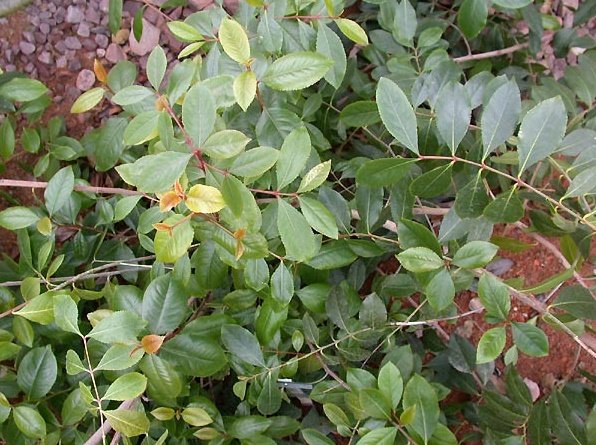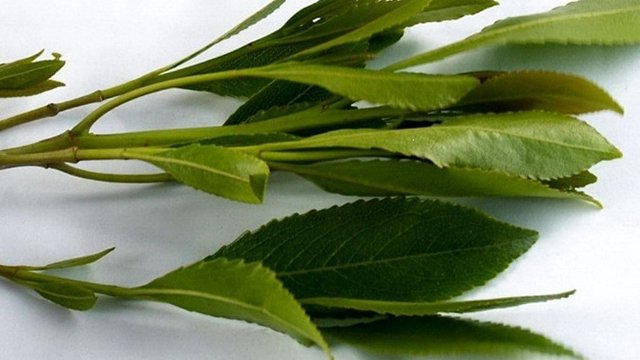
Khat or qat : is a flowering plant native to the Horn of Africa and the Arabian Peninsula. Khat contains the alkaloid
cathinone, a stimulant, which is said to cause excitement, loss of appetite, and euphoria. Among communities from the areas where the plant is native, khat chewing has a history as a social custom dating back thousands of years analogous to the use of coca leaves in South America and betel nut in Asia.
The World Health Organization (WHO) classified it in 1980 as a drug of abuse that can produce psychological dependence, although the WHO does not consider khat addiction to be seriously problematic. It is a controlled substance in some countries, such as Canada, Germany, the United Kingdom, and the United States, while its production, sale, and consumption are legal in other nations, including Djibouti, Kenya, Uganda, Ethiopia, Somalia and Yemen. Consumption of the plant's leaves in its natural state is also permitted in Israel. The plant has been targeted by anti-drug organizations such as the DEA
Khat is a slow-growing shrub or tree that typically attains a height of 1–5 m (3 ft 3 in–16 ft 5 in). However, it can reach heights of up to 10 m (33 ft) in equatorial areas. The plant usually grows in arid environments, at a temperature range of 5–35 °C (41–95 °F).[12] It has evergreen leaves, which are 5–10 cm (2–4 in) long and 1–4 cm (0.39–1.6 in) broad. The shrub's flowers are produced on short axillary cymes that are 4–8 cm (1.6–3.1 in) in length. Each flower is small, with five white petals. The samara fruit is an oblong, three-valved capsule, which contains one to three seeds

Cultivation and uses
Khat cultivation in western Yemen near At Tawilah
Qat tree, Yemen
Yemeni eating qat
The khat plant is known by a variety of names, such as qat and gat in Yemen, qaat and jaad in Somalia, and chat in Ethiopia. It is also known as jimaa in the Oromo language and mayirungi in Luganda Language. Khat has been grown for use as a stimulant for centuries in the Horn of Africa and the Arabian Peninsula. There, chewing khat predates the use of coffee and is used in a similar social context. In Uganda it is grown in the central region, Kasenge Nakawuka Road, Nkugulutale, Nisozi, Nsaggu and some parts of the western region of the country . In Kenya it is grown in Meru County.
Although the practice of khat-chewing is still primarily restricted to its original area of cultivation in the Red Sea area, the khat plant has over the years found its way to Southern Africa as well as tropical areas, where it grows on rocky outcrops and in woodlands. The shrub is today scattered in the KwaZulu-Natal, Eastern Cape, Western Cape and Mpumalanga provinces of South Africa, in addition to Swaziland and Mozambique.
Its fresh leaves and tops are chewed or, less frequently, dried and consumed as tea, to achieve a state of euphoria and stimulation; it also has anorectic (appetite-reducing) side effects. The leaves or the soft part of the stem can be chewed with either chewing gum or fried peanuts to make it easier to chew. In recent years, however, improved roads, off-road motor vehicles, and air transportation have increased the global distribution of this perishable commodity, and as a result, the plant has been reported in England, Wales, Rome, Amsterdam, Canada, Israel, Australia, New Zealand, and the United States. In the United-States, freshly packed khat leaves are sold on the markets of New York, Los Angeles, Boston, and Dallas, where the demand is most high. Traditionally, khat is used as a socialising drug as in Yemen where khat-chewing is predominantly a male habit.
Bundles of khat, seized by the DEA in July 2006
Khat is so popular in Yemen that its cultivation consumes much of the country's agricultural resources. An estimated 40% of the country's water supply goes towards irrigating it, with production increasing by about 10% to 15% every year. One "daily bag" of khat requires an estimated 500 litres (130 US gal) of water to produce. Water consumption is high and groundwater levels in the Sanaa basin are diminishing, so government officials have proposed relocating large portions of the population of Sana'a to the coast of the Red Sea.
One reason for khat being cultivated in Yemen so widely is the high income it provides for farmers. Some studies done in 2001 estimated that the income from cultivating khat was about 2.5 million Yemeni rials per hectare, while fruits brought only 0.57 million rials per hectare. Between 1970 and 2000, the area on which khat was cultivated was estimated to have grown from 8,000 to 103,000 hectares. In 2000, according to a World Bank estimate, khat accounted for 30% of Yemen’s economy.
In other countries, outside of its core area of growth and consumption, khat is sometimes chewed at parties or social functions. It may also be used by farmers and labourers for reducing physical fatigue or hunger, and by drivers and students for improving attention.

It takes seven to eight years for the khat plant to reach its full height. Other than access to sun and water, khat requires little maintenance. Ground water is often pumped from deep wells by diesel engines to irrigate the crops, or brought in by water trucks. The plants are watered heavily starting around a month before they are harvested to make the leaves and stems soft and moist. A good khat plant can be harvested four times a year, providing a year-long source of income for the farmer.
Hi! I am a robot. I just upvoted you! I found similar content that readers might be interested in:
https://en.wikipedia.org/wiki/Khat
Downvoting a post can decrease pending rewards and make it less visible. Common reasons:
Submit